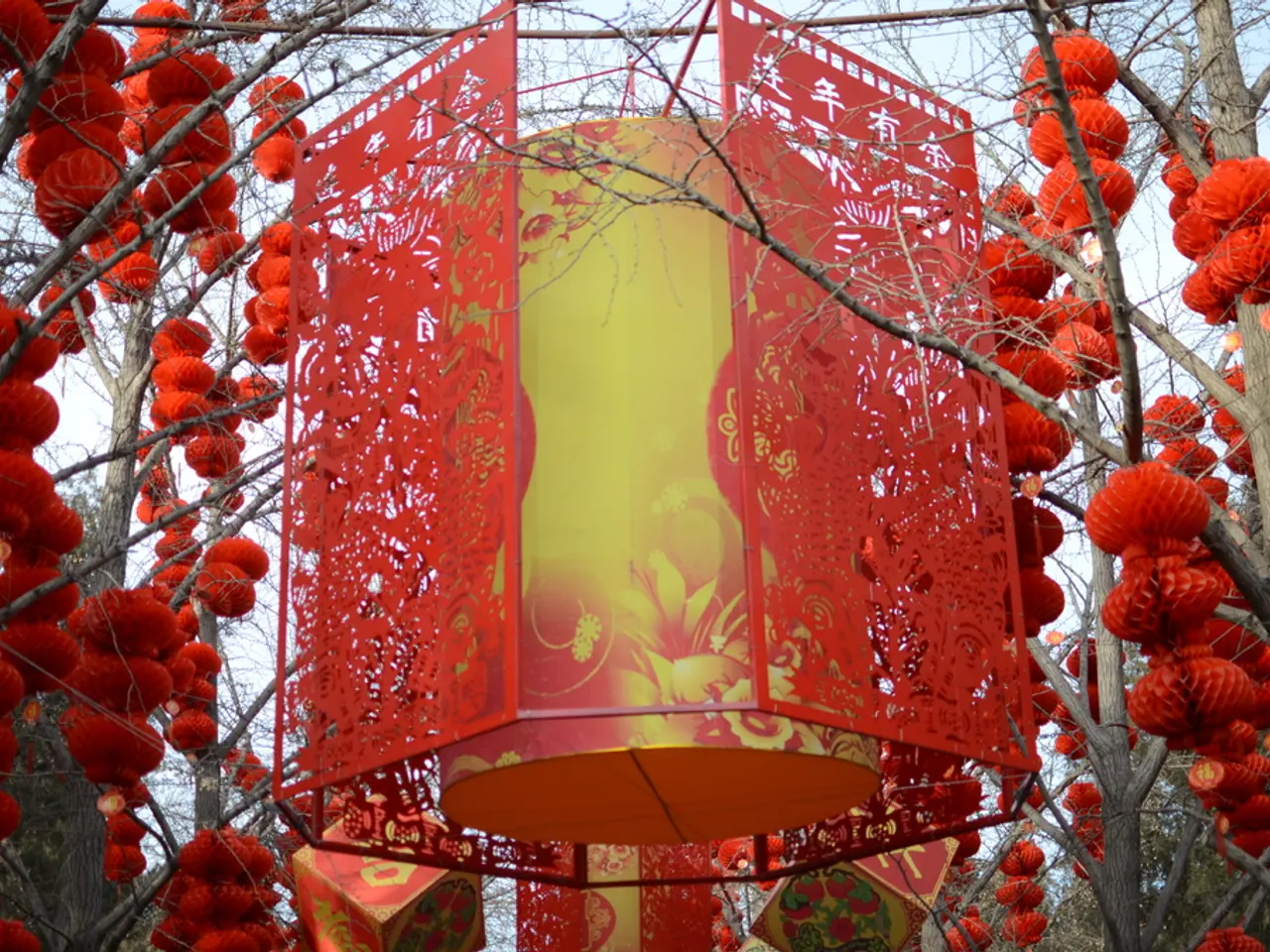Twelve Symbolic Creatures of Chinese Astrology
In ancient China, more than 2,000 years ago, the Chinese Zodiac was formalized during the Han dynasty. This unique system, which has since become a significant part of Chinese culture, is based on a 12-year cycle where each year is associated with a specific animal and linked to personality traits and timekeeping [1][2][3].
The zodiac combines the twelve Earthly Branches—an ancient timekeeping system—with twelve animal symbols: Rat, Ox, Tiger, Rabbit, Dragon, Snake, Horse, Goat, Monkey, Rooster, Dog, and Pig. This integration helped people track years and times of day more memorably and culturally [1][3].
The myth behind the creation of the zodiac signs is most famously told through the story of a race organized by the Jade Emperor, a prominent deity in Daoism. According to legend, the Jade Emperor invited animals to race across a river to determine their order in the zodiac. The clever Rat won by hitching a ride on the Ox's back and jumping ahead at the finish line, securing the first year. The Ox came second, followed by the other animals in the order they finished. This race legend explains why and how each animal was assigned its place in the cycle [1][3][4].
The Chinese Zodiac is not just a practical calendar system; it is also steeped in symbolic meaning. Each animal sign is associated with specific personality traits, adding depth and cultural significance to the zodiac [1][3].
Moreover, the zodiac incorporates the five elements—earth, metal, water, wood, and fire—which add complexity to the zodiac signs and their associated traits. The zodiac also plays a role in personal identity and relationship compatibility within Chinese culture [4].
Each year in the Chinese zodiac has a different characteristic due to the interaction of the animal and the element. For example, if you were born in a Rat year, your element interacts with water in your horoscope. Aligning the five elements to the 12 animals or years of the zodiac creates 60 different combinations, a complete cycle that lasts 60 years [1].
Each person's element in the Chinese zodiac is based on their birth year. The characteristics of the elements are: metal (structure), water (emotion), wood (growth), fire (leadership), and earth (stability).
The Chinese zodiac is a 12-year cycle marked by different animals. Each animal in the Chinese zodiac has signs with which they are most compatible: rats (rats, monkeys, oxen, or dragons), ox (rats, snakes, or roosters), tiger (horses, dogs, or pigs), rabbit (goats, dogs, or pigs), dragon (rats, monkeys, or roosters), snake (oxen or roosters), horse (tigers, goats, or dogs), goat (rabbits, horses, goats, or pigs), monkey (rats, dragons, or dogs), rooster (oxen, dragons, or snakes), dog (tigers, rabbits, horses, or monkeys), pig (tigers, rabbits, or goats).
The story of the Chinese Zodiac is a fascinating blend of practical calendar functions and cultural mythology, forming a cornerstone of traditional Chinese astrology.
The Chinese Zodiac, beyond its practical applications in timekeeping and calendar systems, is deeply rooted in symbolic significance, with each animal sign associated with distinct personality traits and cultural relevance [1][3]. In the modern era, these ancient symbols have found a new platform on social media, where discourses on lifestyle, fashion-and-beauty, entertainment, and pop-culture often intertwine with discussions about the Chinese Zodiac and its influence on individual identities [5][6].
This integration of the Chinese Zodiac into contemporary conversations highlights the enduring appeal of this ancient system, demonstrating its continued relevance not only in Chinese culture but also in global pop-culture [5][6].








